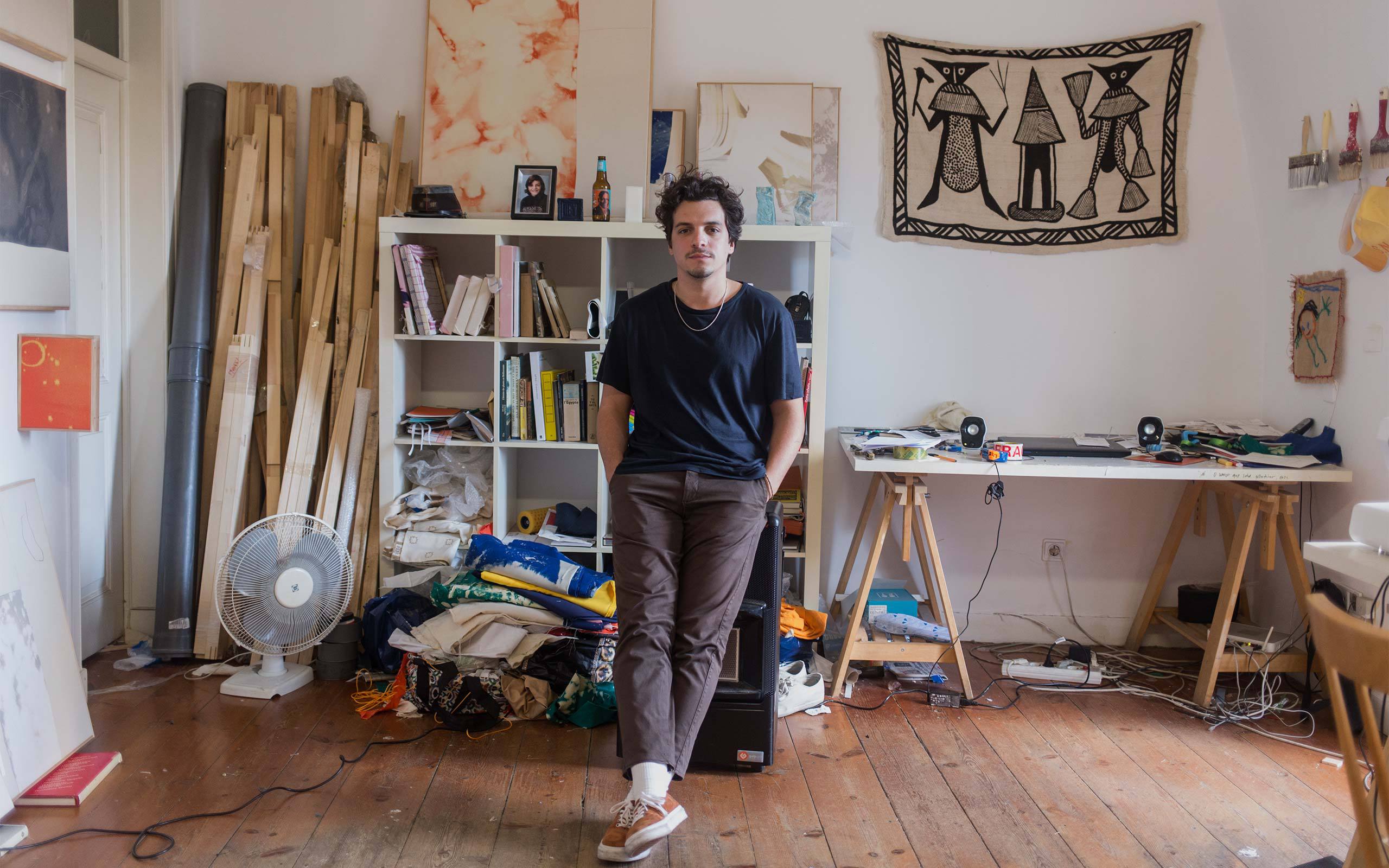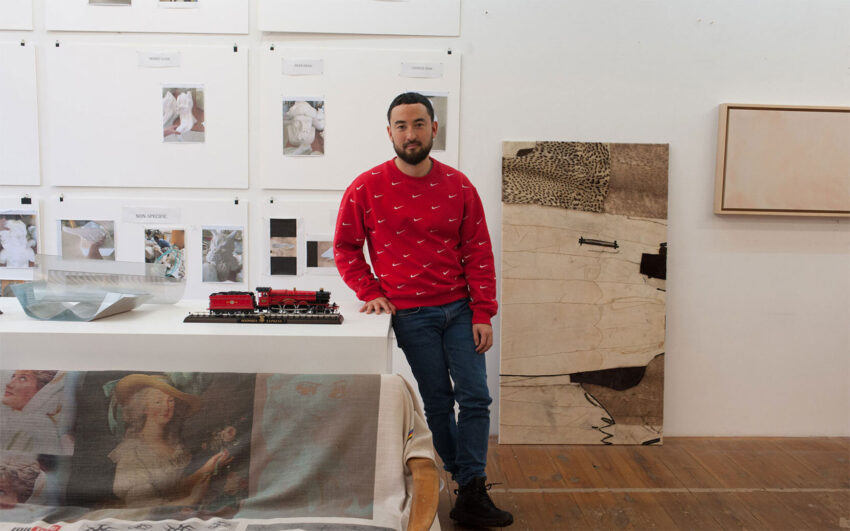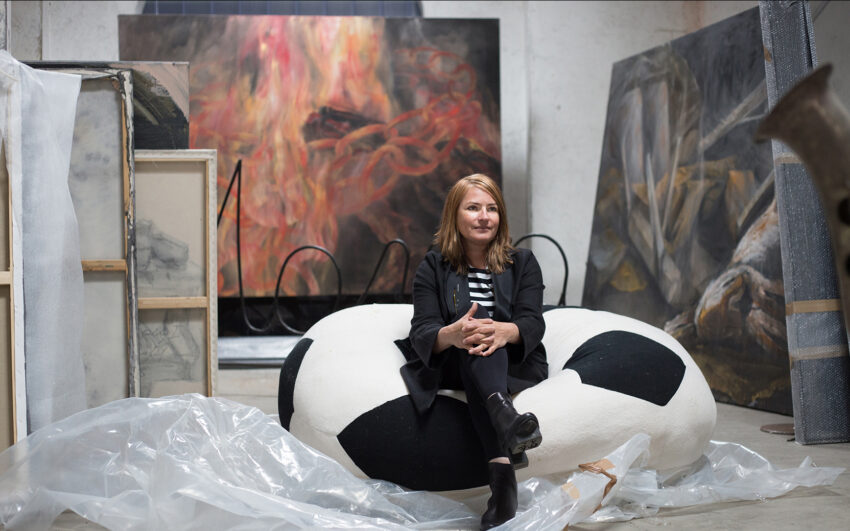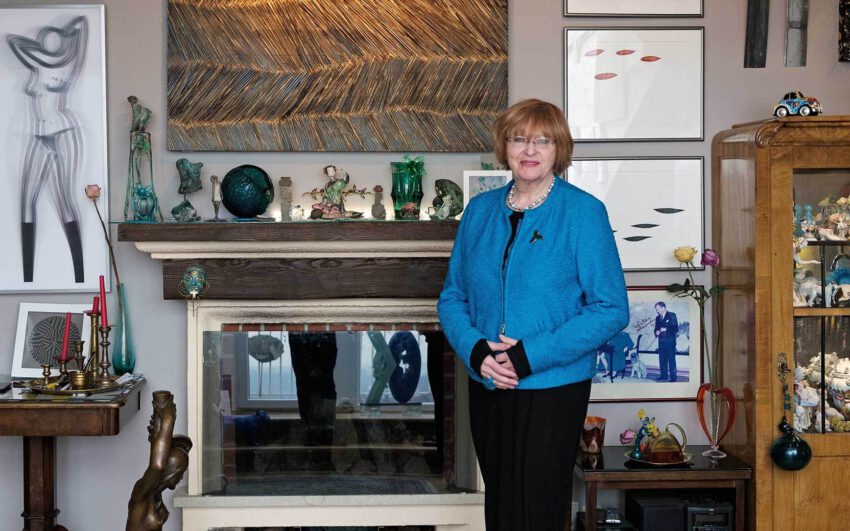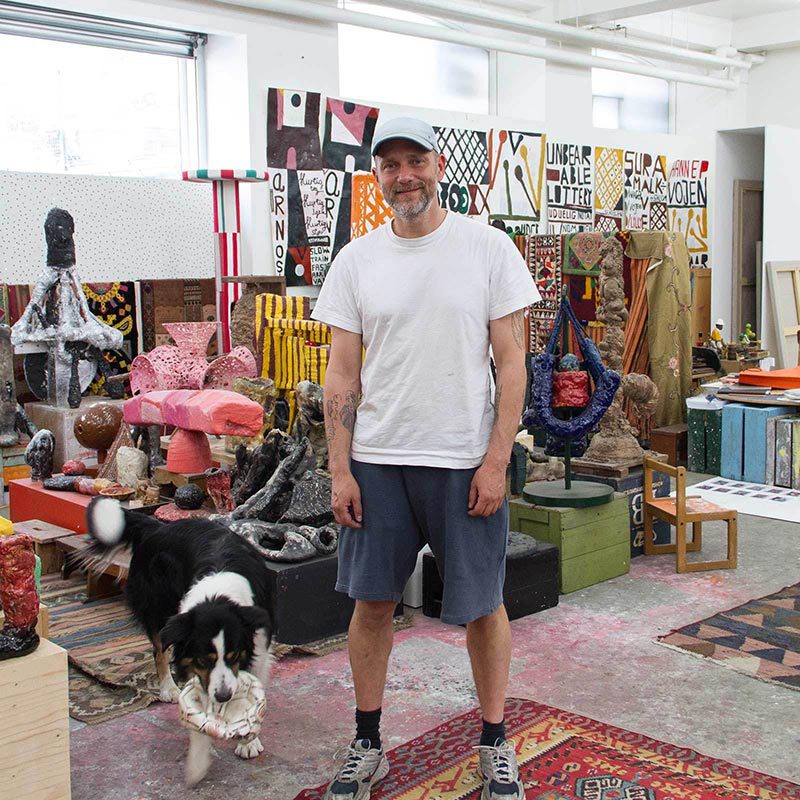Young Portuguese artist Manuel Tainha studied with Anselm Reyle in Hamburg before returning to Portugal – not only for the sun, but also for the bleach and his mentors in the country’s old laundry shops. In his studio above Lisbon's rooftops, Manuel sews together patches of dyed or bleached cloth to create gestural paintings that seem to follow a primary, natural and organic impulse. The embroideries he often adds evoke the notion mysterious traces, as if left by some magical dance.
Manuel, was it always clear to you that you wanted to become an artist?
I remember when I was a young boy my father forced me to go with him to exhibitions ... and through my family I had relationships with gallerists from a young age. The idea of becoming an artist was encouraged by my father, my mother, the heritage of my grandfather who was a well-known architect – and I have the same name as him. A lot of professors, even in my high school were students of my grandfather. I never wanted to do architecture; architecture is a way to relate myself to space but as a child I spent a lot of time in architectural studios and I knew that the process is not as romantic as one would think; however, I used my time in those studios to entertain myself with various materials. In the end to study painting was the only option, because I was a really bad student and only good at drawing …
Can you remember your first artwork?
Oh, it’s this one! (laughs, and shows a stitched drawing on the wall). This was my first artwork from ’97 when I was four years old. I just found it as I was moving into this studio. As this is my father’s house it also has a lot of memories from when I was a kid. When I discovered it again it made a lot of sense because I was starting to do these serious (stitched) drawings. Back then this wasn’t on my mind, obviously. It was an exercise that every child had to do but yes, that is probably the first artwork. It’s still my best one. I truly believe that.
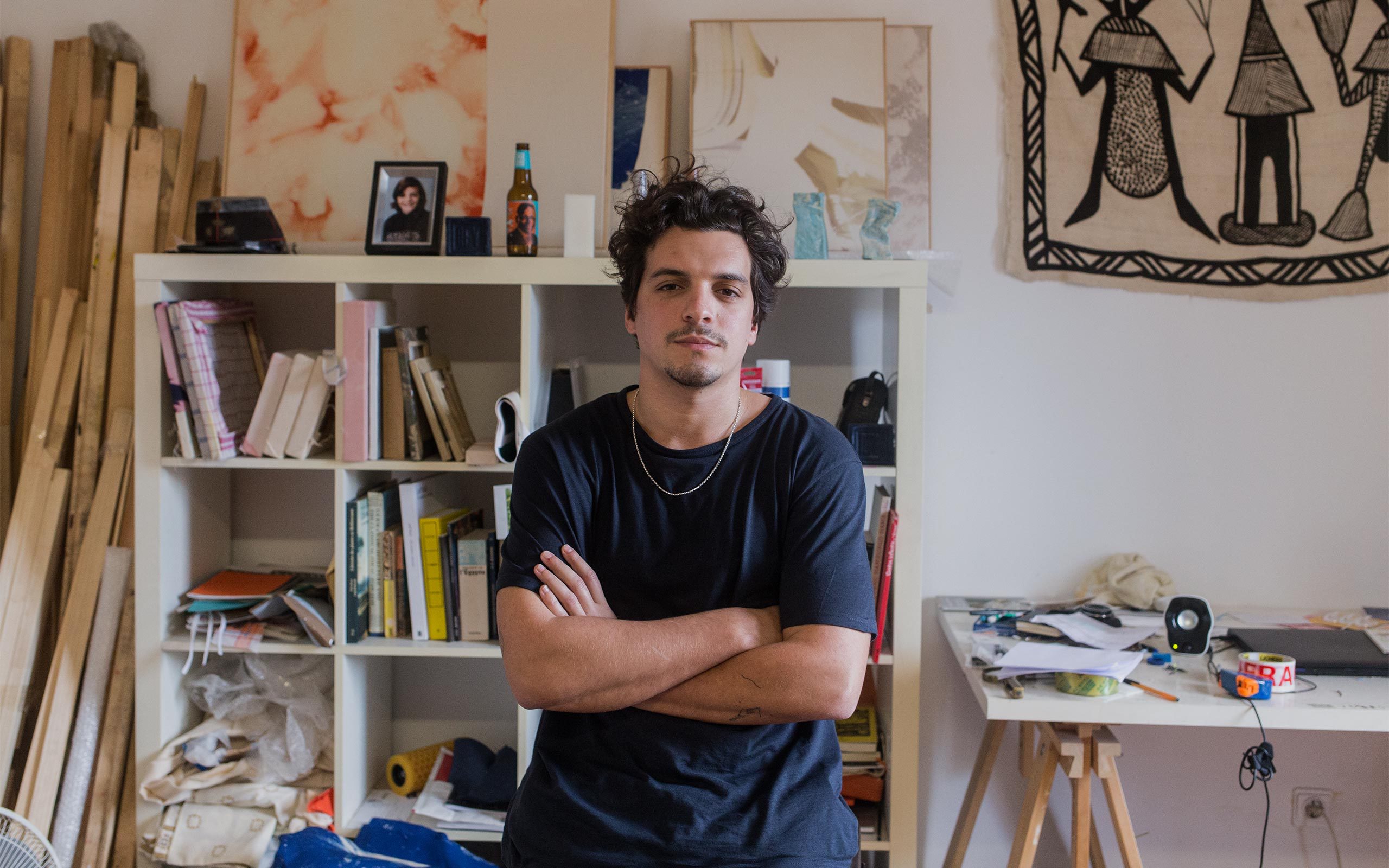
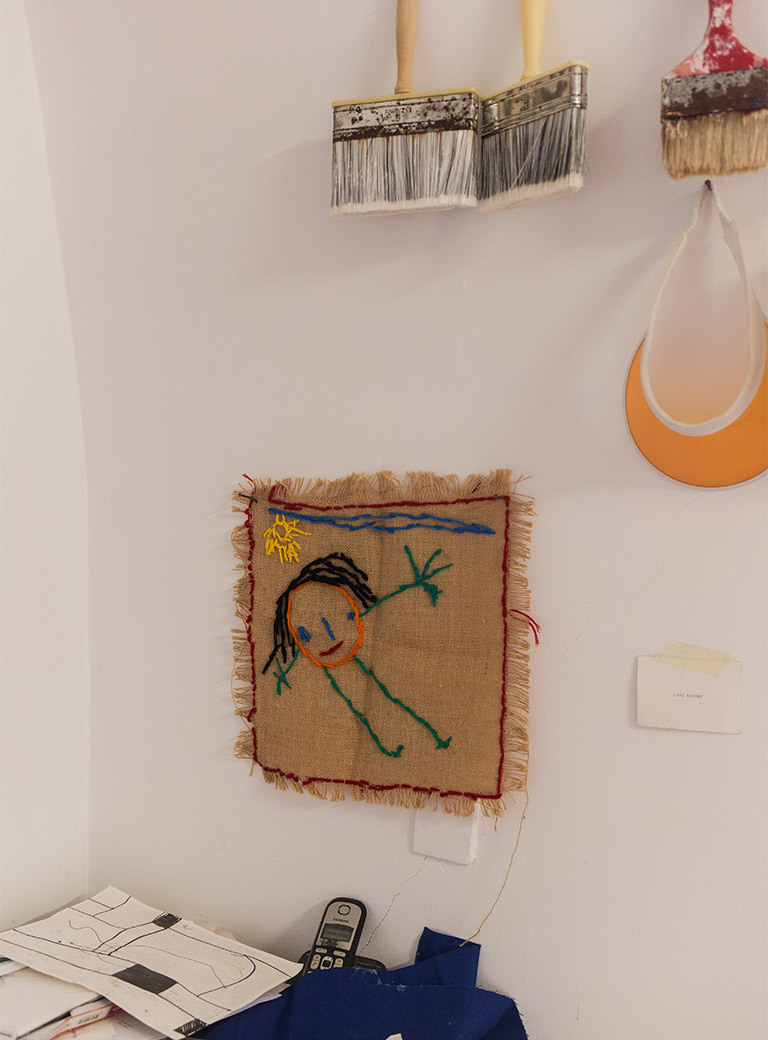
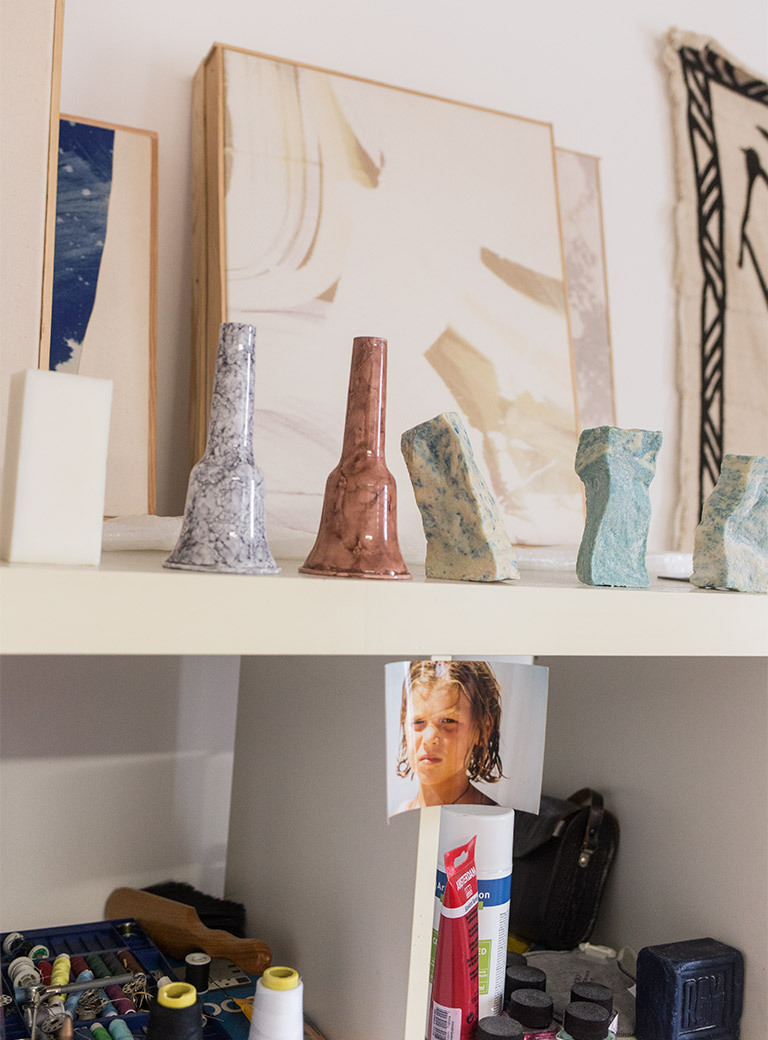
So let’s talk about your artistic journey: You studied Fine Arts in Lisbon...
Yes, I had already chosen art as my main subject during the last three years in high school and afterwards I studied painting at the academy of arts. I think the best thing about going to art school is meeting one’s fellow students and of course, if you are lucky, some good professors. It was really important I think, that in my year and the year ahead of me, that we were really proactive in terms of doing stuff outside of university, arranging ways to showcase our work: for me this was a very valuable experience.
How did the decision to go to Hamburg come about?
My father advised it and in one of the exhibitions I helped to assemble in Lisbon I got to know Matt Mullican who was a professor in Hamburg. The biggest stroke of luck for me was that I got into Anselm Reyle’s class, which was something that was rather surprising because the only thing I knew about him were his artworks; and I was intrigued by that because, at the time, they were quite different to the path I was taking. For me that was the best possible encounter I could have had. The format of the school was refreshing, the spaces were amazing and Anselm Reyle was just the kindest person.
How was it to return to Lisbon?
I spent ten months in Hamburg. After that I think it was a really good time for me to come back to Lisbon. Meanwhile three or four new foreign galleries had opened, which was something that was unexpected. And I got a studio and started working as much as I could to be ready for opportunities. When I arrived in Lisbon, I did a project in a library in the North of Portugal, in Viseu, not an art-scene related kind of thing, but it was about the energy I had gained in working everyday and to mix that with my roots. Something that I realized in Hamburg was that I needed to be surrounded by the cultural references that are part of my work. For example to get the kind of fabric I wanted and the materials, the specific kind of bleach, that was really difficult in Germany. It was about this familiarity regained in coming back and of course the sun and everything...
In terms of art, the art scene or the approach to art, did you notice a difference between Germany and Portugal?
One of the reasons why I decided to go to Hamburg, or Germany itself for that matter, was the way one looks at painting there. I think up to the moment I left, I had not seen that many painters showcased in Portugal. Also, some people think that I don’t do paintings because of my use of fabrics and my sometimes objectual approach. The first references I had when I was studying art were always sculptures because I came from this architectural perspective. So, I like this idea of working a painting as a sculpture or sculpture as a painting. For me painting has no boundaries. But in my view that kind of thing was not discussed in Portugal. That’s the good thing that I was breathing in Hamburg.
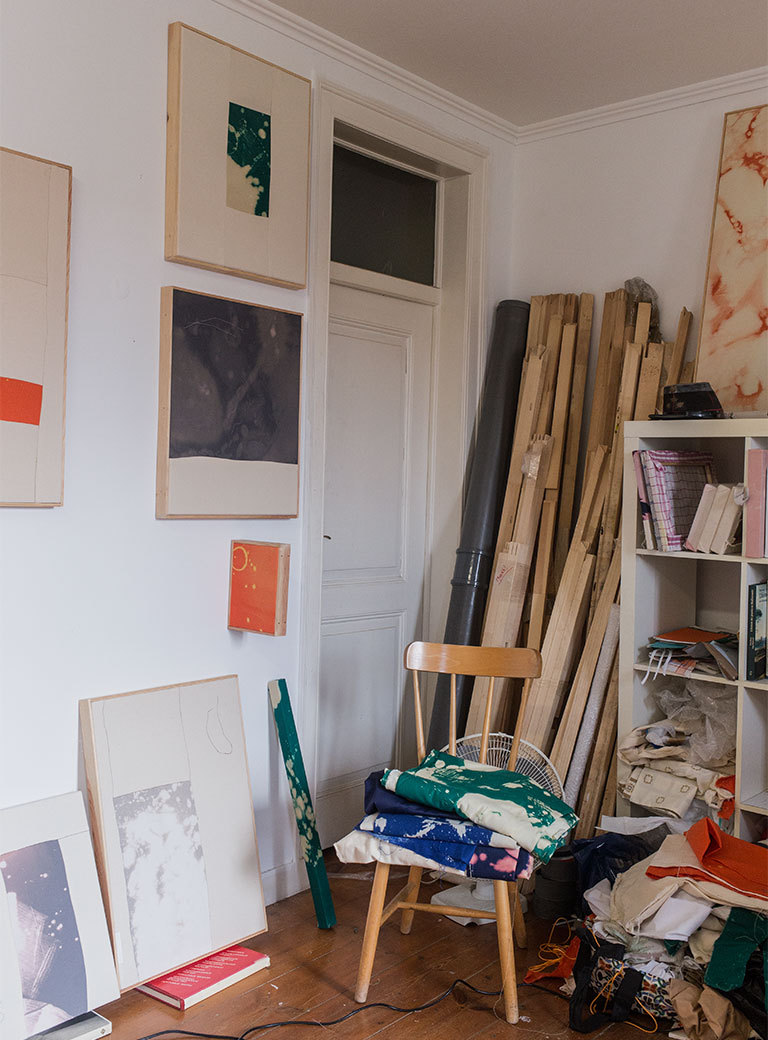
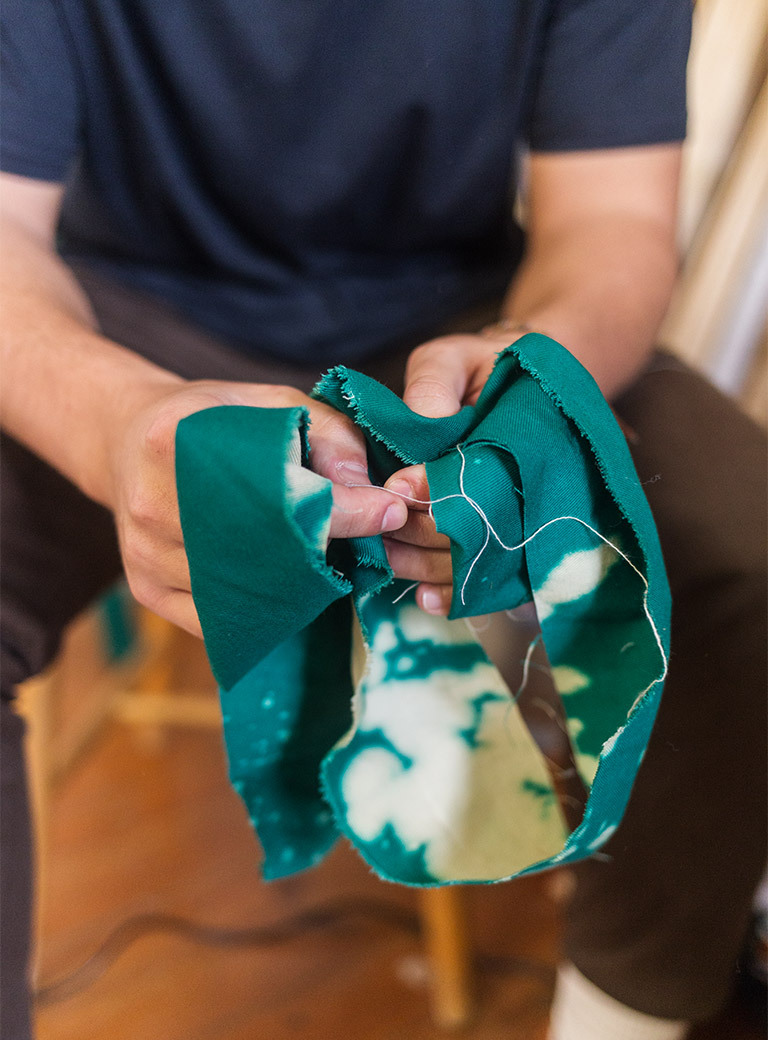
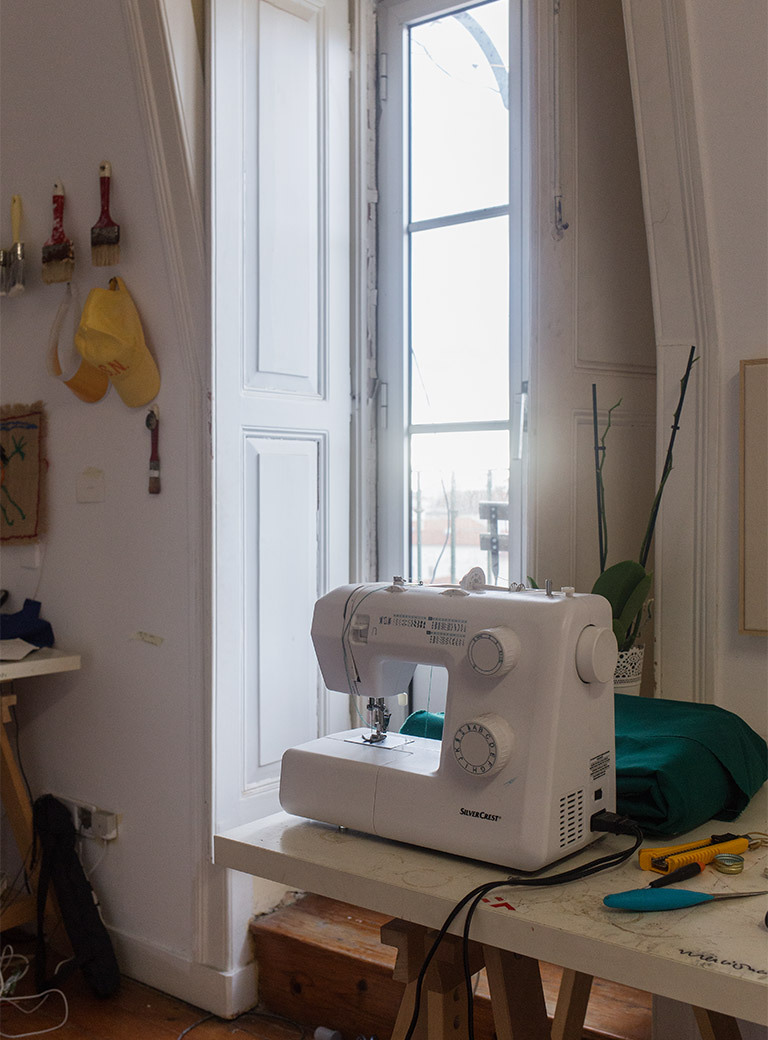
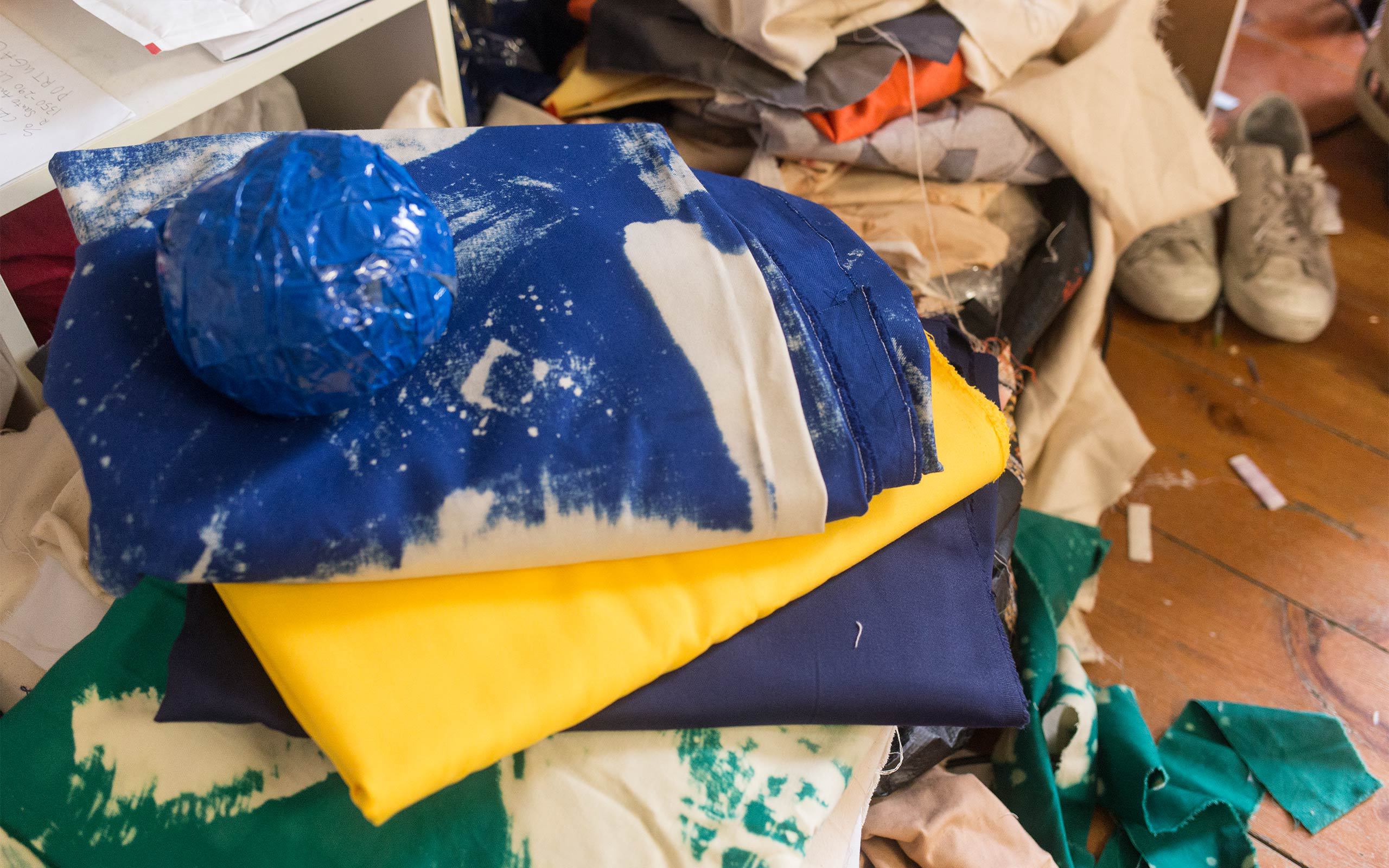
The way you approach your work, is it more experimental and intuitive or do you start from a certain concept?
I think every first step is always to create a good painting. I know that sounds too general but it’s really my first goal. In that way it is really traditional. A lot of the things that are happening during the process are like a dance, in a very fundamental sense. I have music... Normally, when I’m painting, during the action part it’s a lot of Hip-Hop, Afro, and then you can switch to Neil Young. I just go with the flow. The music doesn’t dictate the movement but it helps. What is interesting to me in the gestural paintings is the memory of the gesture: because it is here, but it doesn’t have the texture. It is like a trace, a mapping of something that happened. In some cases you have an imprint of the floor itself. I’m not just using brushes, but everything that is to hand, if I’m drinking a beer, I can use the bottles, or a glass of wine, food, everything that helps me to compose the image, because in the end, it’s not just a bottle, not just a brush stroke anymore, but a memory of that. The idea starts like that, and then there is this need to compose with no excuses almost and it always has to be in a more or less fluid way. Also, in the work the notion of violence remains a big component.
Violence in what way?
In the process itself. I played rugby for many years. Being around these natural elements and doing something that looks violent but is really coordinated, trying to follow the rules but not be violent is something that interests me. This idea of getting these really subtle colors through a really aggressive process, a chemical medium (bleach) and controlling that aggressiveness is something that I see as violent – of course also the stretching, the sewing, the hammering of a nail directly into the canvas stretcher. All of these things not only relate to a formalistic way of seeing violence, but also to an idea of grace. I think both sport and dance have a relationship with violence.
Which works came first, the bleached ones or the stitched ones?
The bleach works. I was working on the bleach paintings since 2015 I think, in a kind of romantic way but I was impatient and it took many months to compose these landscape inspired images which I was doing back then. I started to accelerate the process. And once I had figured out that bleach can produce most of the colors that I wanted to achieve I saw that this can be a medium for me. And it also had such a cultural charge for me, because the first time I showed these works, there was this cleaning maid and she was like: “Why does it smell like I just cleaned these?” Here in Portugal we typically use bleach for cleaning. Her reaction for me was a really happy moment. Most of my advices to work, to control the works, these old processes to work in a traditional way with these materials, come from the cleaning ladies. I did these works in a public laundry and this lady, Dona Fernanda, was like my first mentor in working on some real formalistic problems. Sewing was also a necessity at the beginning to explore scale and composition. And it was about this idea of using “the whole animal” so to speak. In the Portuguese cuisine, for the stew, you use all of the cow or the pig, so every piece of work, that turns out to not work for me, I try to use for another one. I kept on extending the language, experimenting, with the same limitation of materials and without imparting importance on a particular chronology.
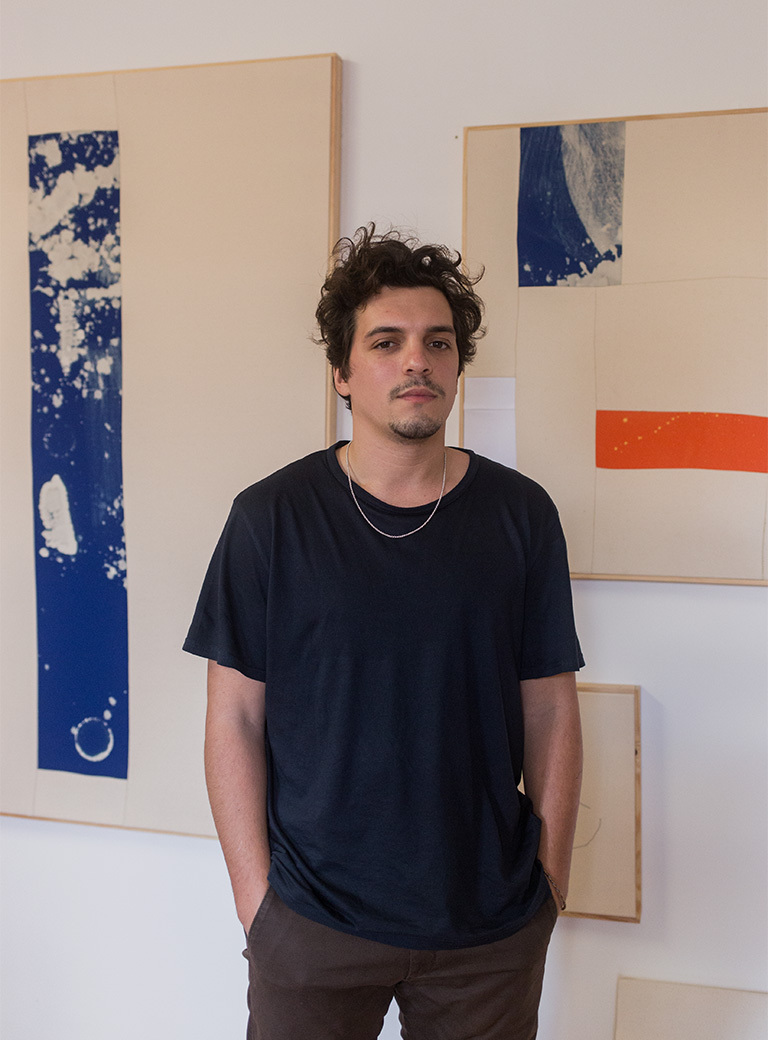
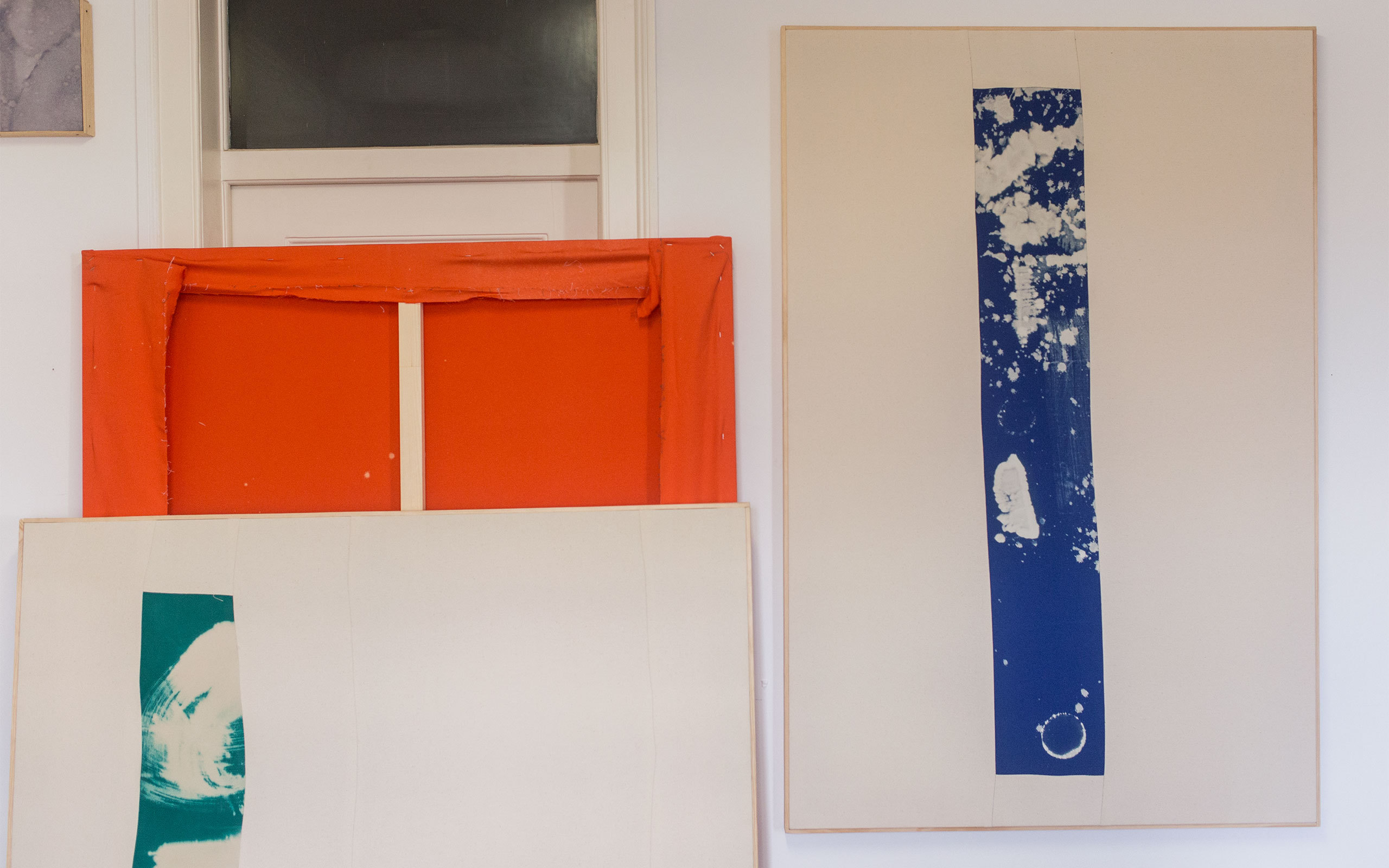
The sewing images look rather fragile and poetic as it’s just this reduced line, like a drawing. Do they have the same kind of violence and dance within them still? To me they seem very innocent ...
I understand that, but fragility and violence go hand in hand for me. It’s so fragile, but it’s also violent that I pull through the thread and the needle, it’s like a mark, a scar ... And for me it´s also about that limit of what you can control with your hands. But the idea was to give these works that fragility and personality of what a drawing is – as they are drawn: at the back. The process is a process of drawing. But the decision of following the traces or not is a decision that is made in the very moment that I’m producing that “permanent scar”. I think it’s all about decisions. That’s why the first drawing on the back has to be really quick, without making too many decisions. Also the drawings came a lot from this experience when you are almost asleep and you see something floating in your eyes, like on the beach when you have salt in your eyes, this kind of dreamy thing between dream and reality.
You have installed some of your works on the walls in such a way that they protrude into the room perpendicularly – rather like certain kinds of store or business signs. What is the concept behind that idea and how does it connect or correspond to your way of working?
Those works are a strong direct reference to architecture – not only because they are more objectual but also because they help me challenge the idea of how to visualize a painting in a pre-conceived space. Actually they started as models for these other large scale two-sided painting-sculptures but after installing them in my studio they started to become something else. I also like the thought that you relate them to store signs because in the end I am still advertising something: an idea.
What are your references or inspirations?
Of course they are unconditional. Seeing the tradition of old masters and realizing that they are so up to date, there were and still are of course, a lot of artists who are important. Vilhelm Hammershøi as an old master, Michael Biberstein, Portuguese artists like José Loureiro, who is a close friend of mine, but also people like Michael Majerus, in the way he looks at painting as something with no boundaries, his work in the half-pipe, picking up these references. There was this video of Michael Majerus on YouTube talking about Sigmar Polke’s work, how the initial brief moment is the most beautiful, and the ensuing moment always revisits that fleeting instance. I think that for me this is a really important thing. Apart from artists there are other people, from my grandmother to my mother to a rugby player… The trailer of FIFA 2003 influenced me a lot, music, a dance routine that I saw, a joke a friend told me – they go hand in hand in a way. I think mixing those universes has been helpful for my work.
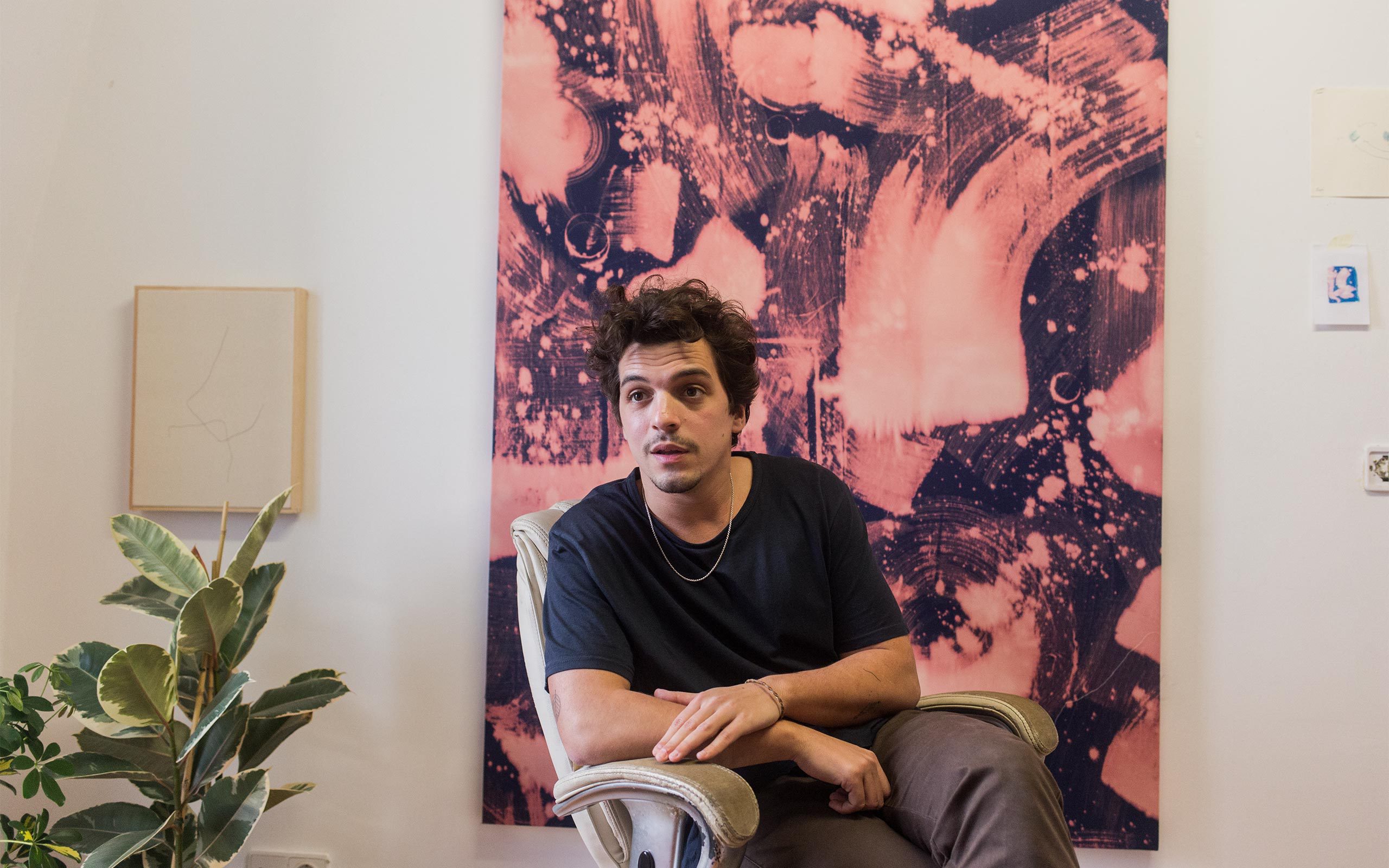
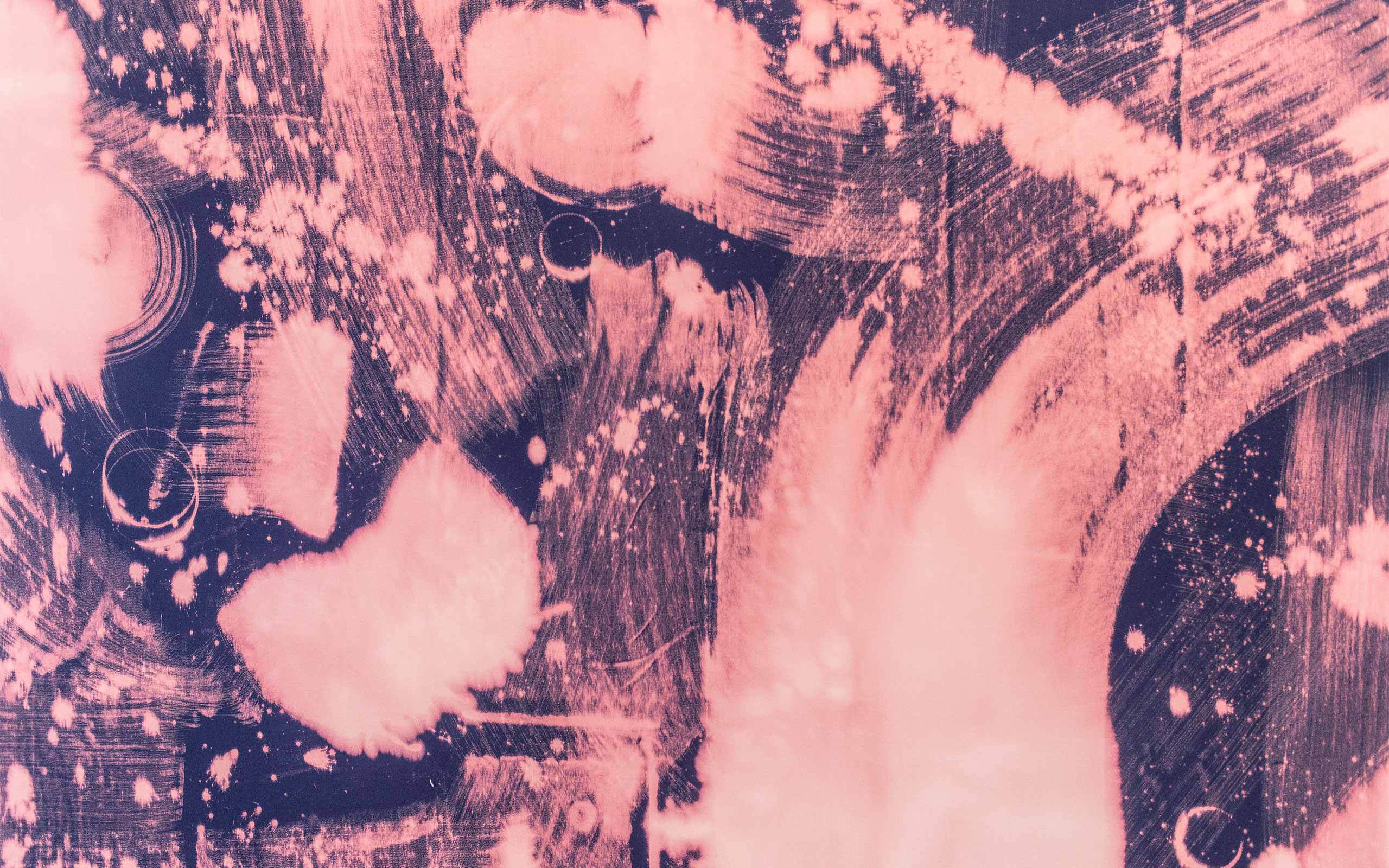
What is the best that can happen to someone engaging with your art?
Just having that brief first beautiful moment. This is the first and the last thing I can wish for. The rest, who am I to control that? I think the most beautiful things that can happen or that I ever saw, the major part of it was so uncontrolled on the part of those who produced it – because I think the moment you want to control it, you lose so many good things.
How important is it for you to have an “artistic career” or what does success mean for you personally?
I don’t think that I can really respond to that, due to my inexperience in life altogether. Artists who in my view seem successful are these who have not only the respect of their peers but who can also build that bridge to the public, which for me is also really important.
Online we only find you on Instagram. Was it a conscious decision to limit your exposure online?
Ah, well, the website is down now ... I forgot to pay (laughing), but I did have one. But I’m working on a new website because I need it and I still love websites as they were also the first platform that allowed me to see other artists from across the world. Instagram, however, has also been a good tool, especially for the communication with the public. It happens that I sell something via Instagram but mostly it’s just the first step for people to connect with my work. To connect in general: If you want to reach an artist or a plumber, you just text them, I think it’s about communication.
What’s next for you?
My solo show at Last Resort in Copenhagen just opened. And I am in discussion regarding other shows. I’m also doing an installation for an architect friend for a teahouse in Rua da Madalena in Lisbon. It’s going to be a painting for the ceiling. So there is again this need to involve myself in architecture, too ...
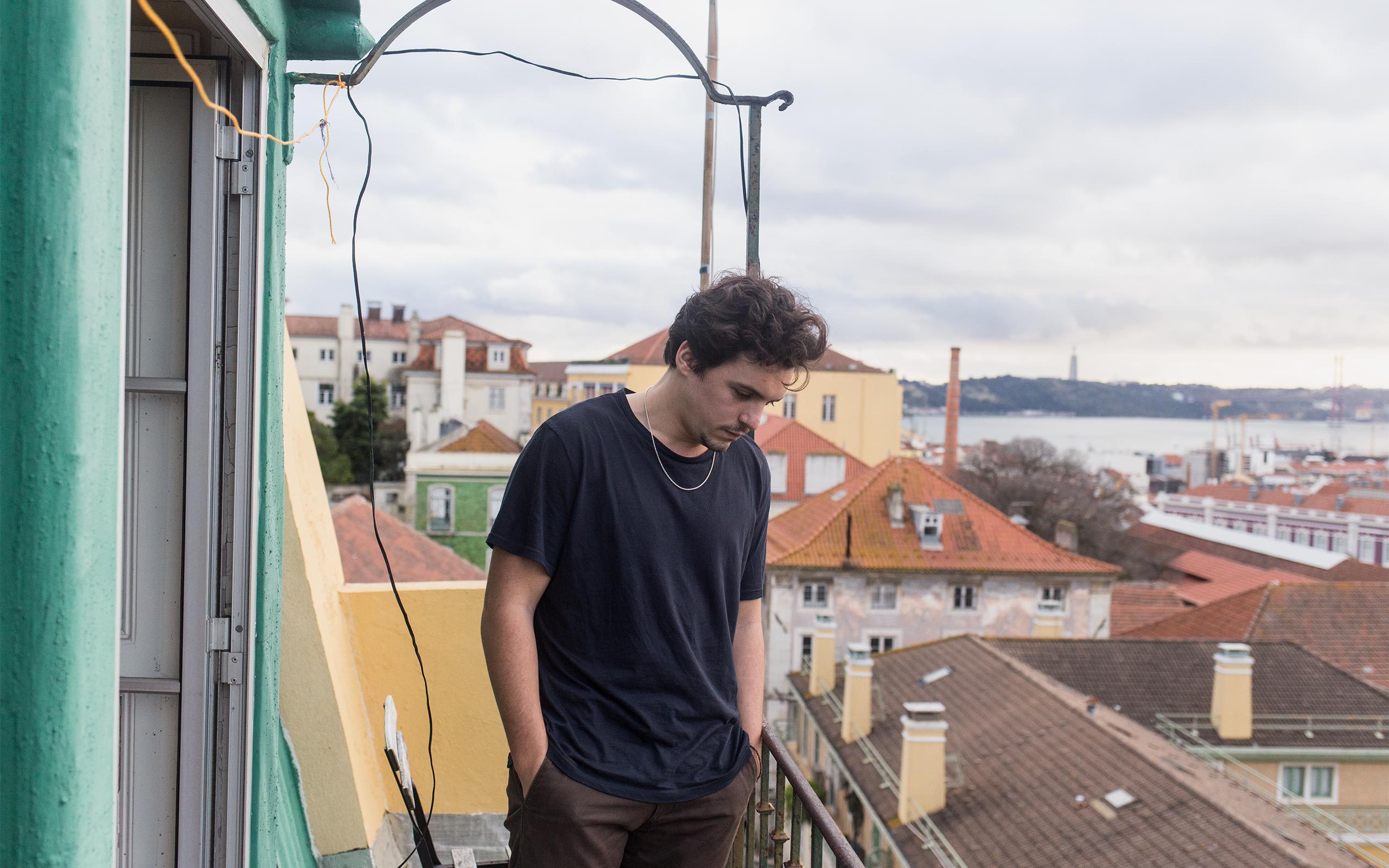
Interview: Chrischa Oswald
Photos: Fábio Cunha


